March 27, 2016
Martha O'Kennon
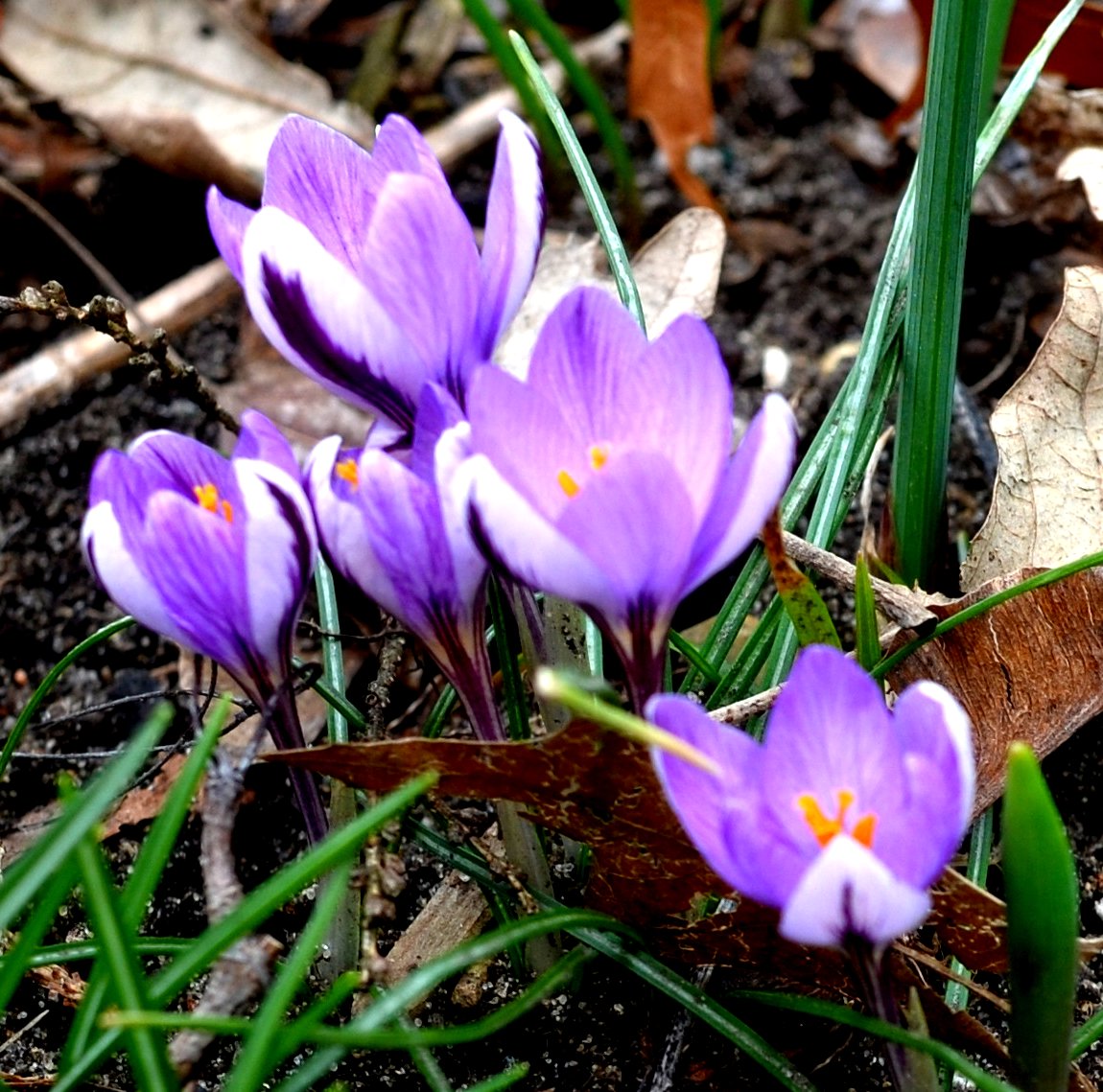
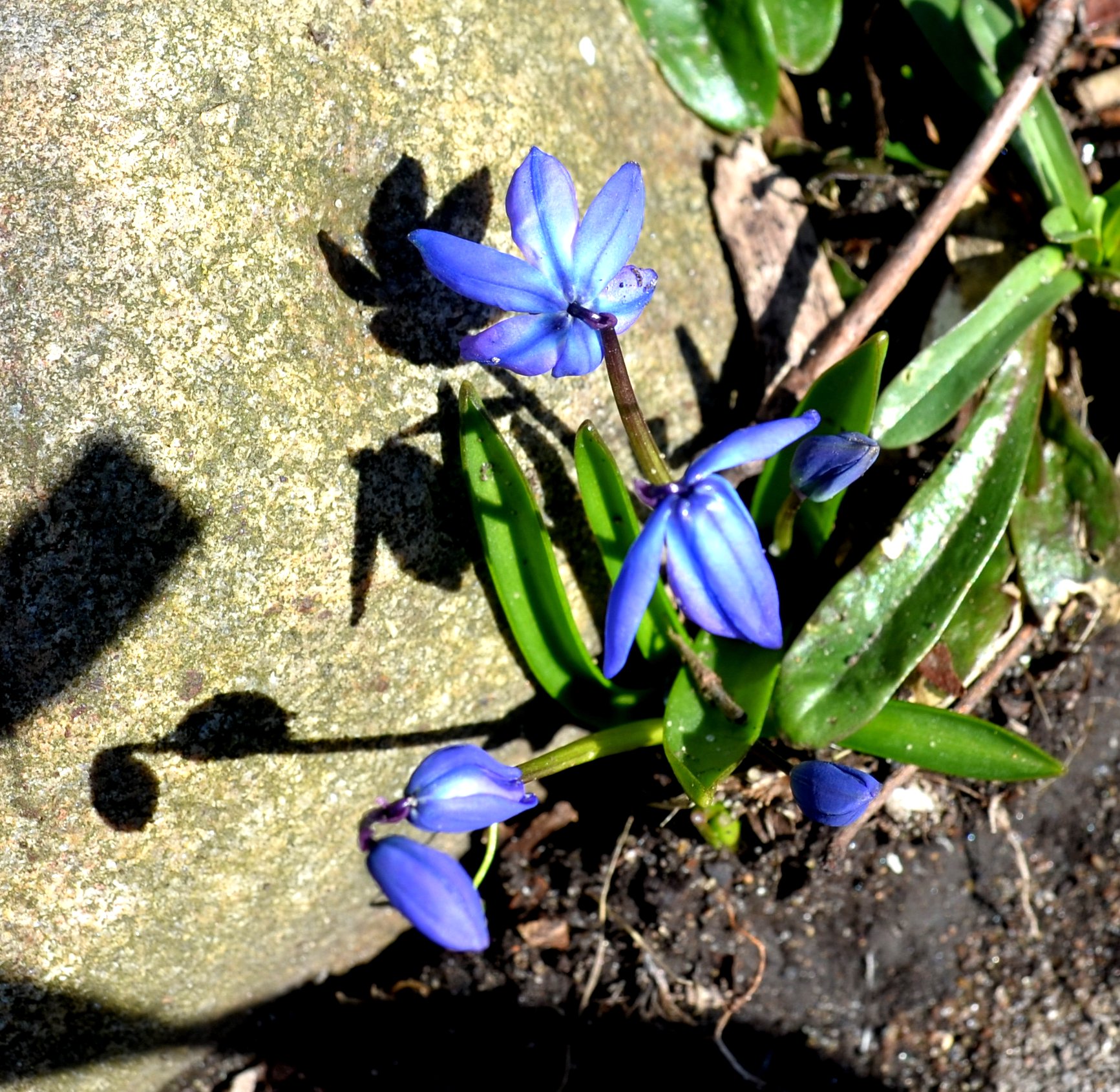
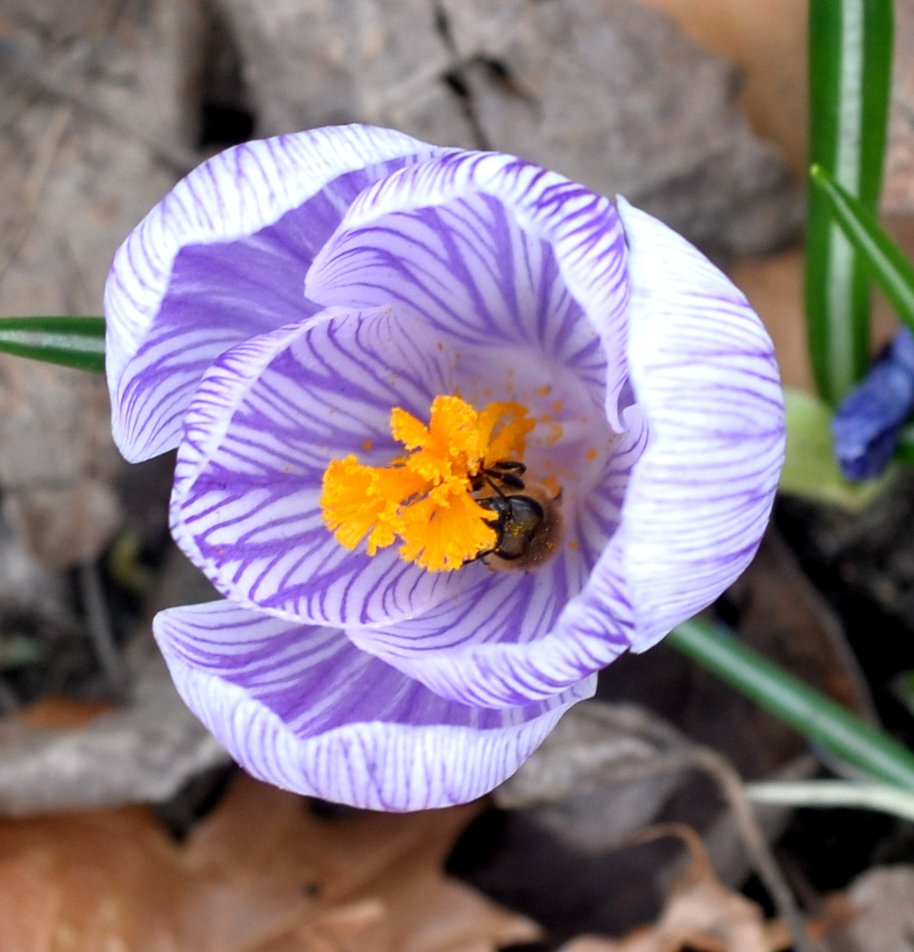
After a few weeks of grumpy relinquishing of the last throes of winter, spring attacked today. Shirt-sleeves, people! Get out and go meet your neighbors!
The yellow-orange winter aconites are dried up, as are the early early light purple crocuses. Now the fancy crocuses ( white, orange, purple and white striped on the right, and the scylla or "squills" in the middle.
Remember that there is information in the name of the file for each image. You can see it by mousing over the image - look at the lower left of the screen.
I would try clicking on the image. If the little "+" sign appears, it means you can enlarge again. While it is in "+" mode, click on something you want to see more clearly and it will zoom to that section. Then the info is displayed in the address line above. If the image has been cropped
so that clicking on it doesn't result in a larger picture, you can always hit control-plus to increase the size of the image.
Here are a few loners. Isn't it nice to see a bee in a real green forget-me-not clump? It seems to be licking up moisture from the night's dew. You can see one big dewdrop in the upper left. Next a looper (inchworm), a cast-off looper skin, and finally a grey moth, which is probably a geometrid moth, the adult form of a looper! We don't know that it is the adult of THIS looper, though.
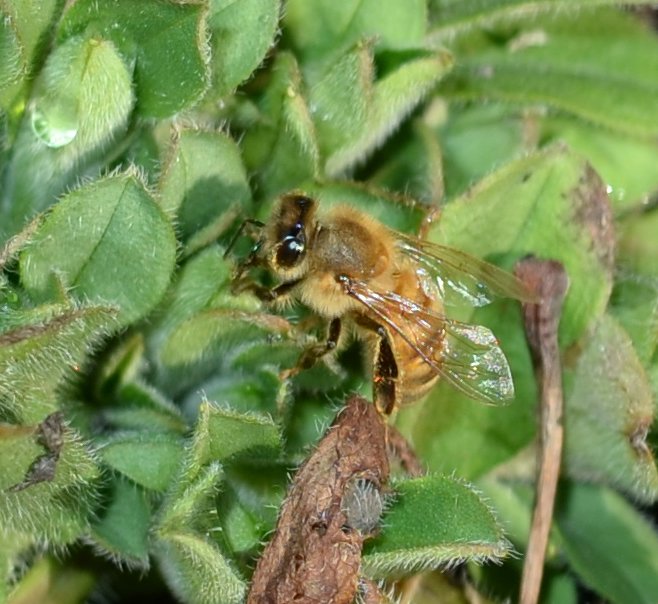
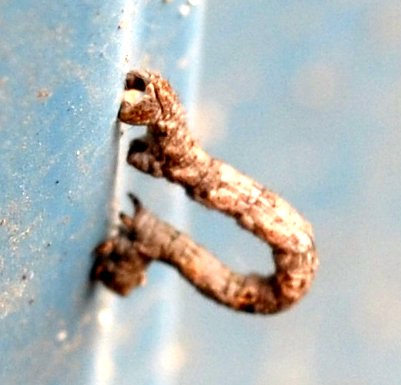
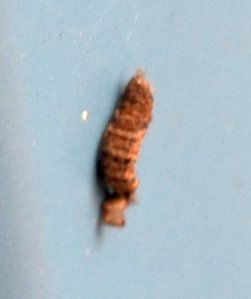
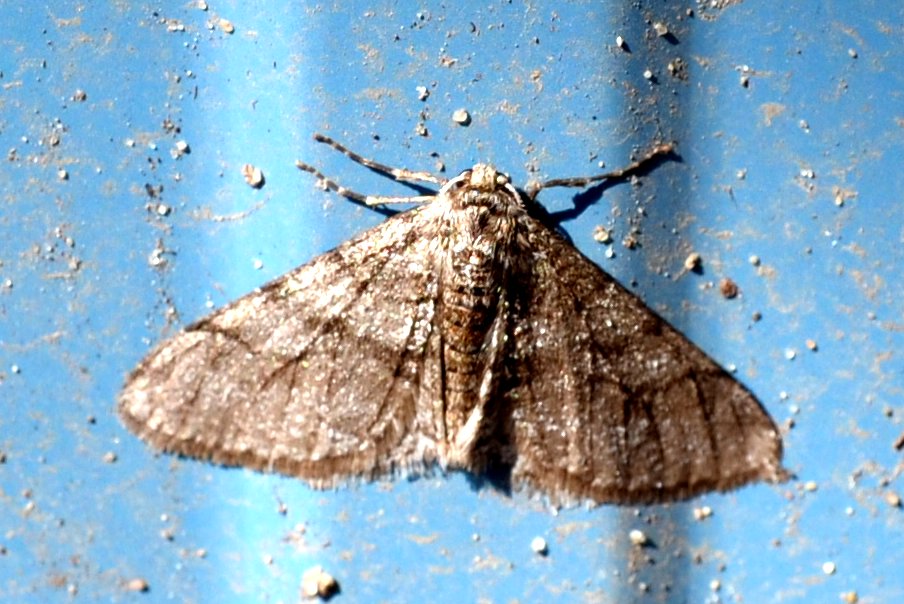
Since the midges and fungus gnats are so close to the top of my mind, let's talk a tiny bit more about them. Now there seem to be at least two species of midge out. The large ones are about 6 mm long compared to the tiny ones which are at most a couple of mm. Here is a small one, a small male with that awful parasitical mite - again on its cheek, which is where they seem to latch on- and one of the large ones.
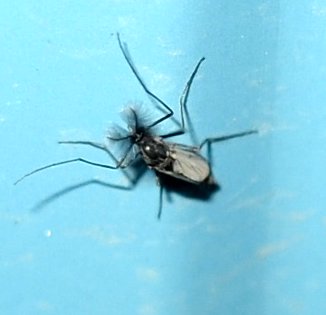

These two are larger midges. Is the one on the right a different species? It is a male (note the fuzzy antennae) but is it a sexual color change or not? From what I've read in Bugguide.net, these larger midges are almost certainly genus Chironomus.
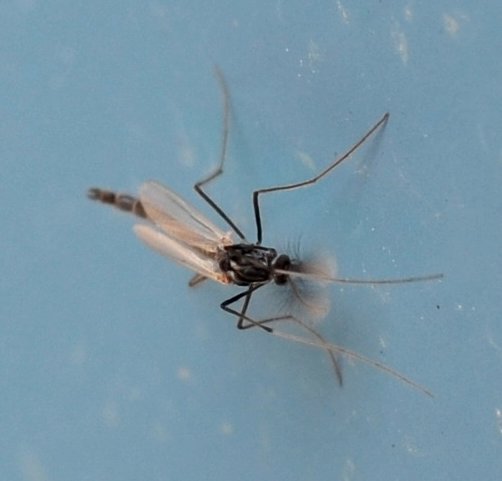
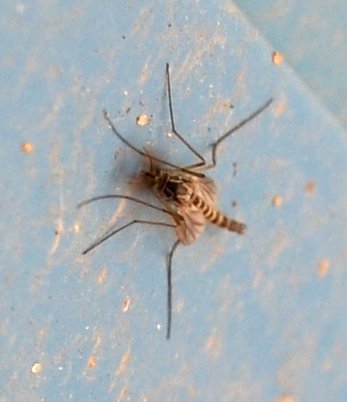
That was it for the midges. How about the gnats? We always think of them as the annoying horde of microscopic pests buzzing in a ball above our head or elsewhere. The truth is, the gnats are rather lovely little things. Even the wings of the dark-winged fungus gnats glimmer in iridescent splendor. What this picture lacks in definition makes up somewhat for it with its glowing wings. This one and the second are females (pointy abdomen) and the next one a male (long thin abdomen stretching beyond the wings, no point). This wood gnat gets the last word - look at that beautiful pattern on the wings!
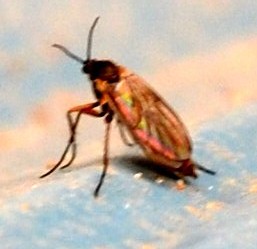
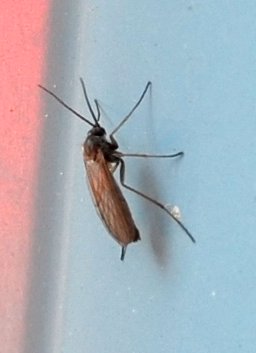

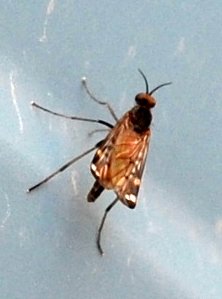
Listen, I took my own advice and went out and ran into people I haven't seen for just ever! Then I went back home and found some new surprises. A gnat that looked a bit different. In this first image, it seems to have spiky shoulder-pads. Hmmm! In a friend's backyard, this strange thing appeared. We had one out running around the pond before. At first I thought it was a fly but today when it first materialized it made me think "wasp". I'm going to look it up later and I'm going to start searching on "sawfly". Why? Just a hunch. Note: I looked up sawfly and this is indeed a common sawfly. I like its greenish eyes, pale as they are.
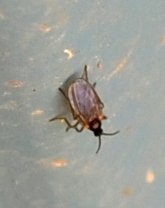 .
.
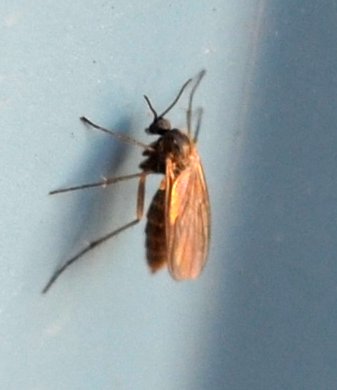
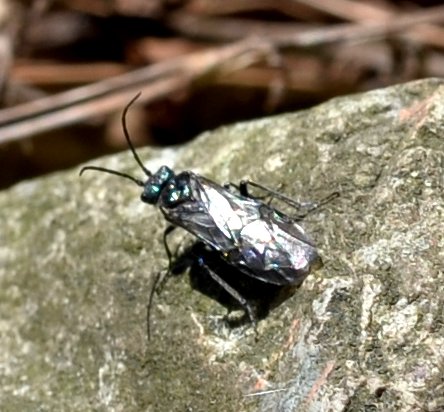
There were, however, more flies. You all know and love the green blowfly. And the big black fly! And this one with the wings held close to the chest. This last one should probably have been placed with the gnats, but I haven't figured out yet just what it IS! It is prettier than some of the other ones in this row, though.
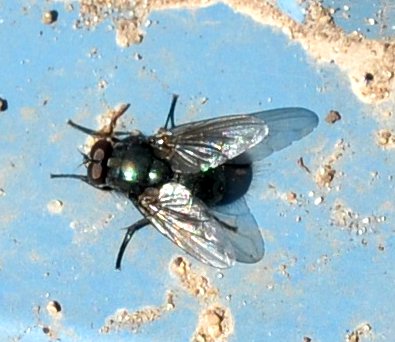
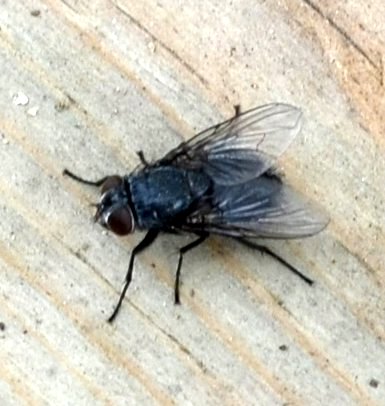
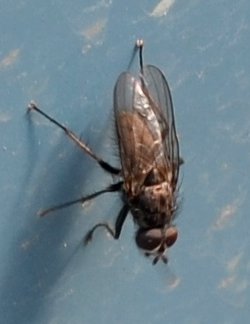
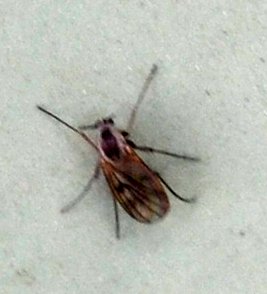
Not a single rove beetle in the past two weeks! But I believe we've seen this orange beetle. And also this matte-finished one. But I at least didn't see any others for this itme.
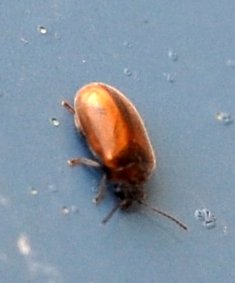
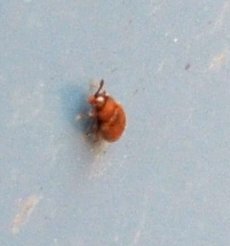
But there were a couple of little leafhopper-lookalikes. Neither one rings a bell, so let's call them new for this date and possibly for any time so far. Number 2 and maybe number 1 is a Psyllid of genus Pachypsylla. Third, pretending to be a tiny toad, is the nymph of a real Leafhopper of genus Agallia.
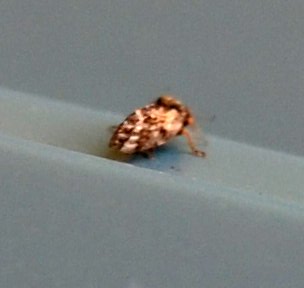
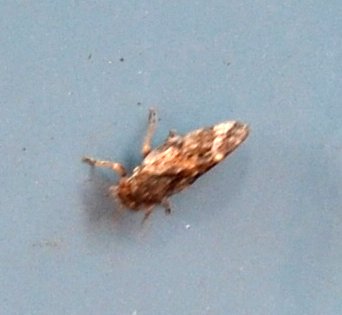
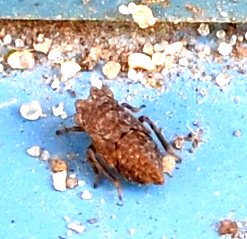
Those little "mystery" cases have an inhabitant of which I've only seen a couple of segments coming out and drawing the case upward (Usually). But I'm not the only one wondering what could be inside? Here is a common house spider wondering the same thing about a stick-case builder called a Bagworm. They must be able to sniff out fresh food.

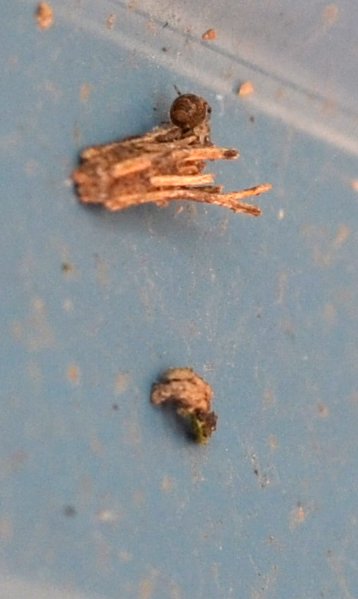
Are you thinking what I'm thinking? That we need to cleanse our palates with some gorgeous flowers? The white hellebore is two years past being moved from the spot where the workshop would go. But the purple one survived and bloomed its heart out. We mostly never get a look at the inside of the flowers because they always droop, but isn't that the color of the day? This one may take a bit to load, but it will be worth it.

I think we've earned some spider time. Here is one of the first harvestmen (Daddy-long-legs) I've seen this year. One spider with orange segue-ing into black body, which I've never identified, unless this is a kind of wolf spider. The next robust-looking spider is also still in the mystery book. The common house spiders are finally getting to a decent size to study. They got that way by netting big prey like this one.
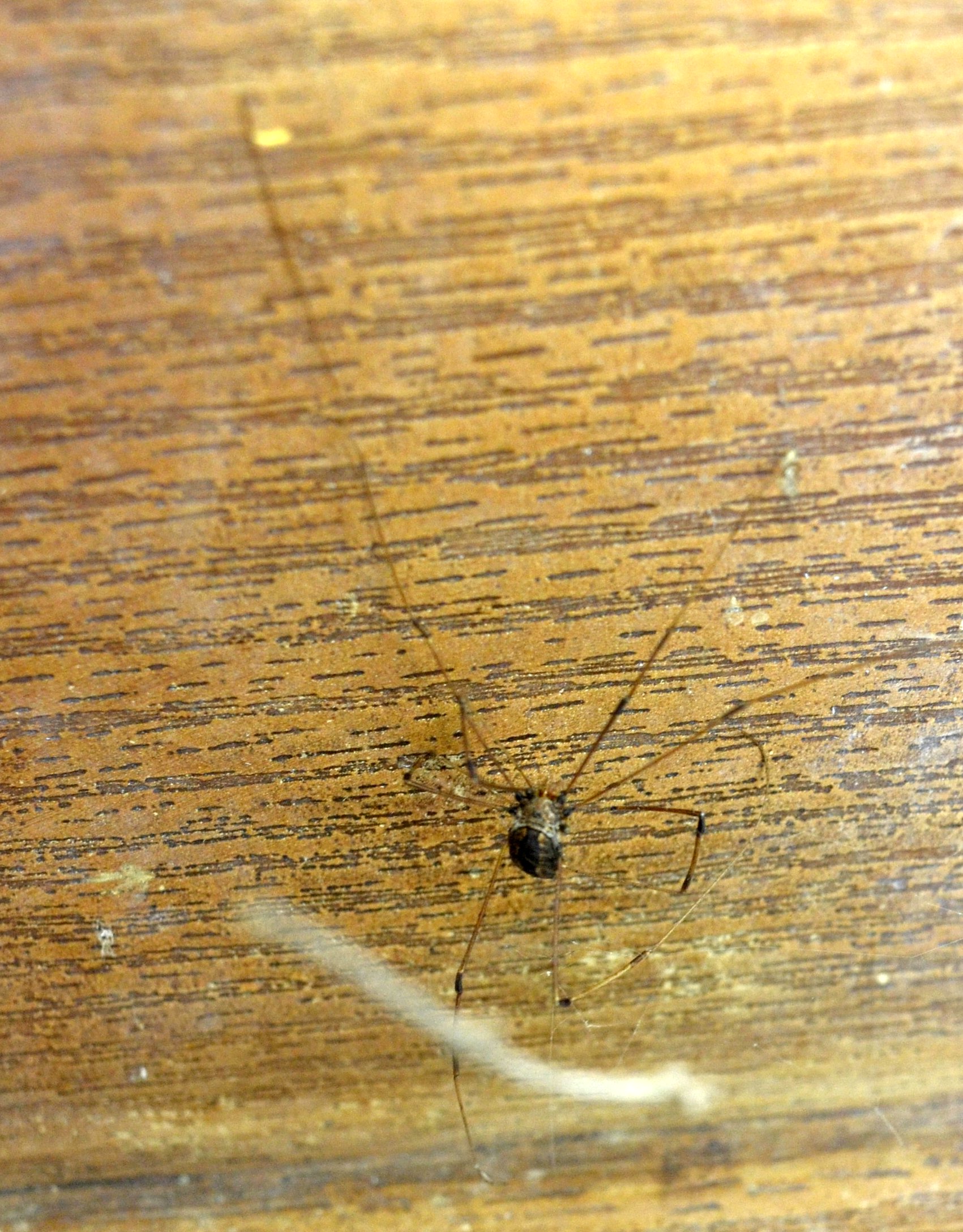

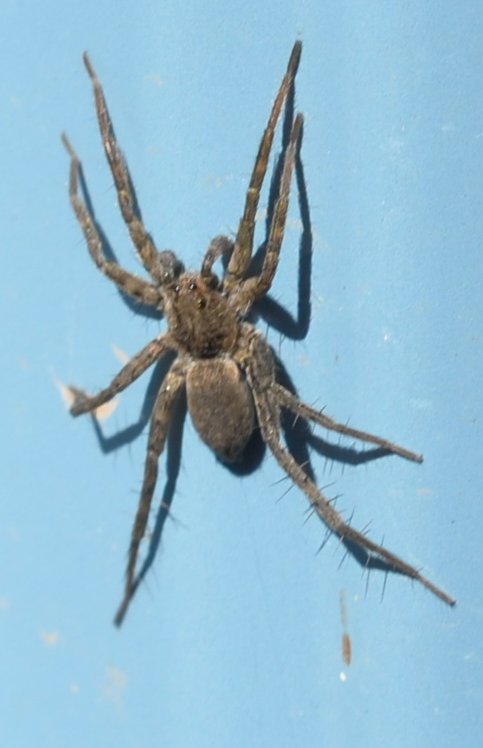
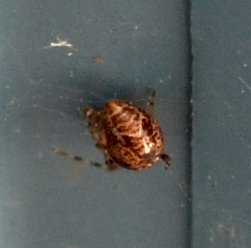
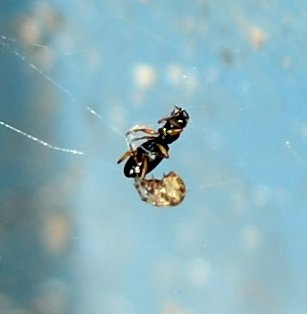
Quite a few more spiders dared to come out this week. This is a ground crab spider that last year I was calling the Navajo patterned spider. The slightly more elongated one is called the running crab spider. Crab spiders have the easy-to-learn characteristic - they generally hold their first two pairs of legs together to give the effect of a crab's claw. This last one is running about with unfinished prey in its mouth!
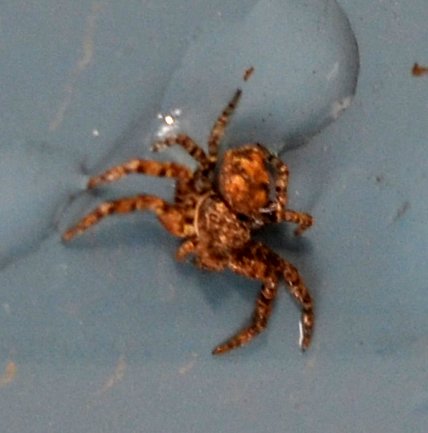
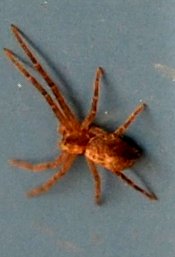
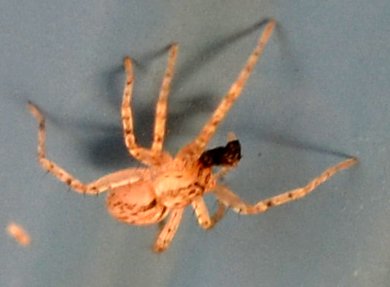
Now for more pretty flowers. First, a red primrose just beginning to open up. A little clump of purple violets - they've only been out for a couple of days now. Some yellow crocuses to break up the purple.
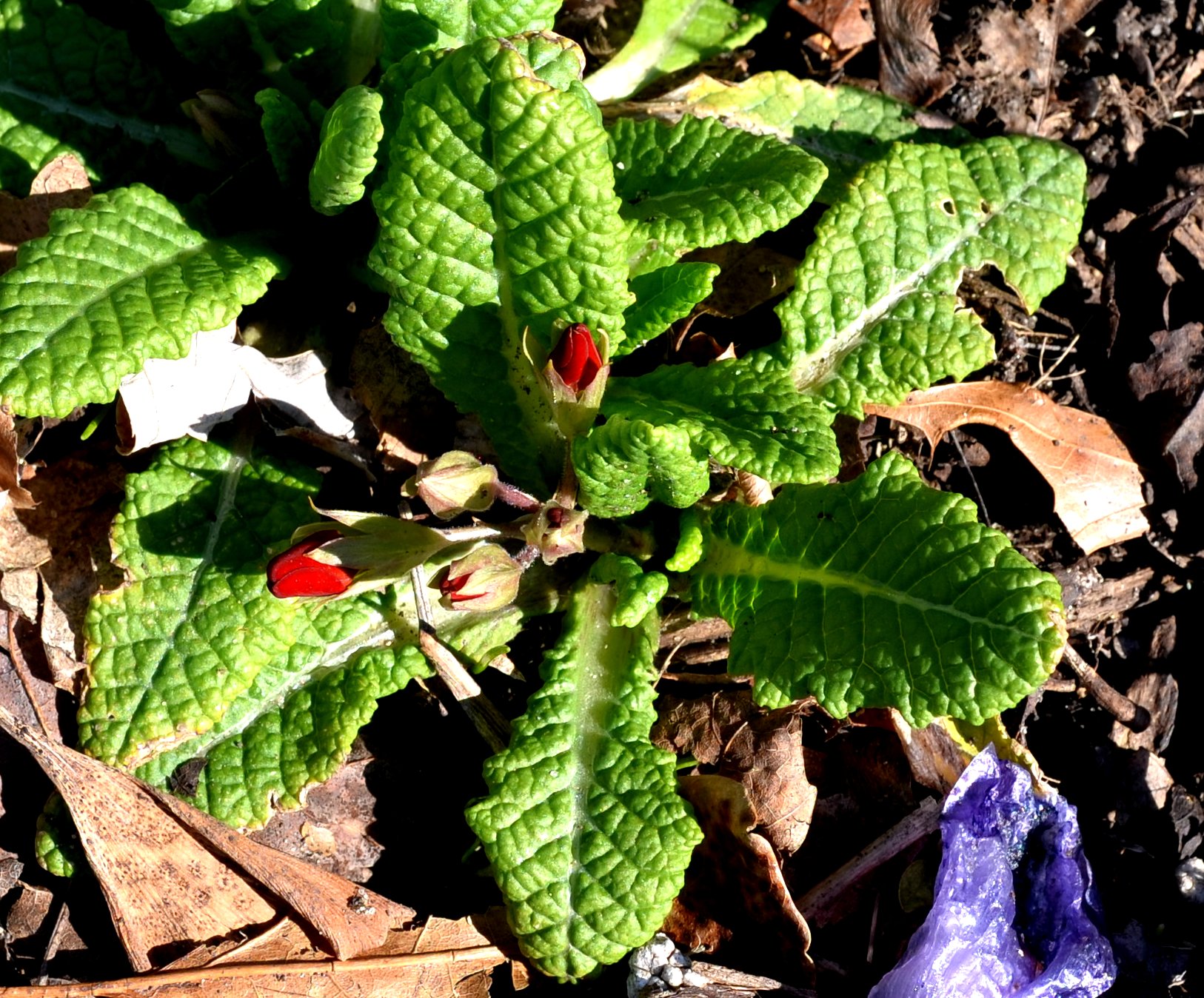
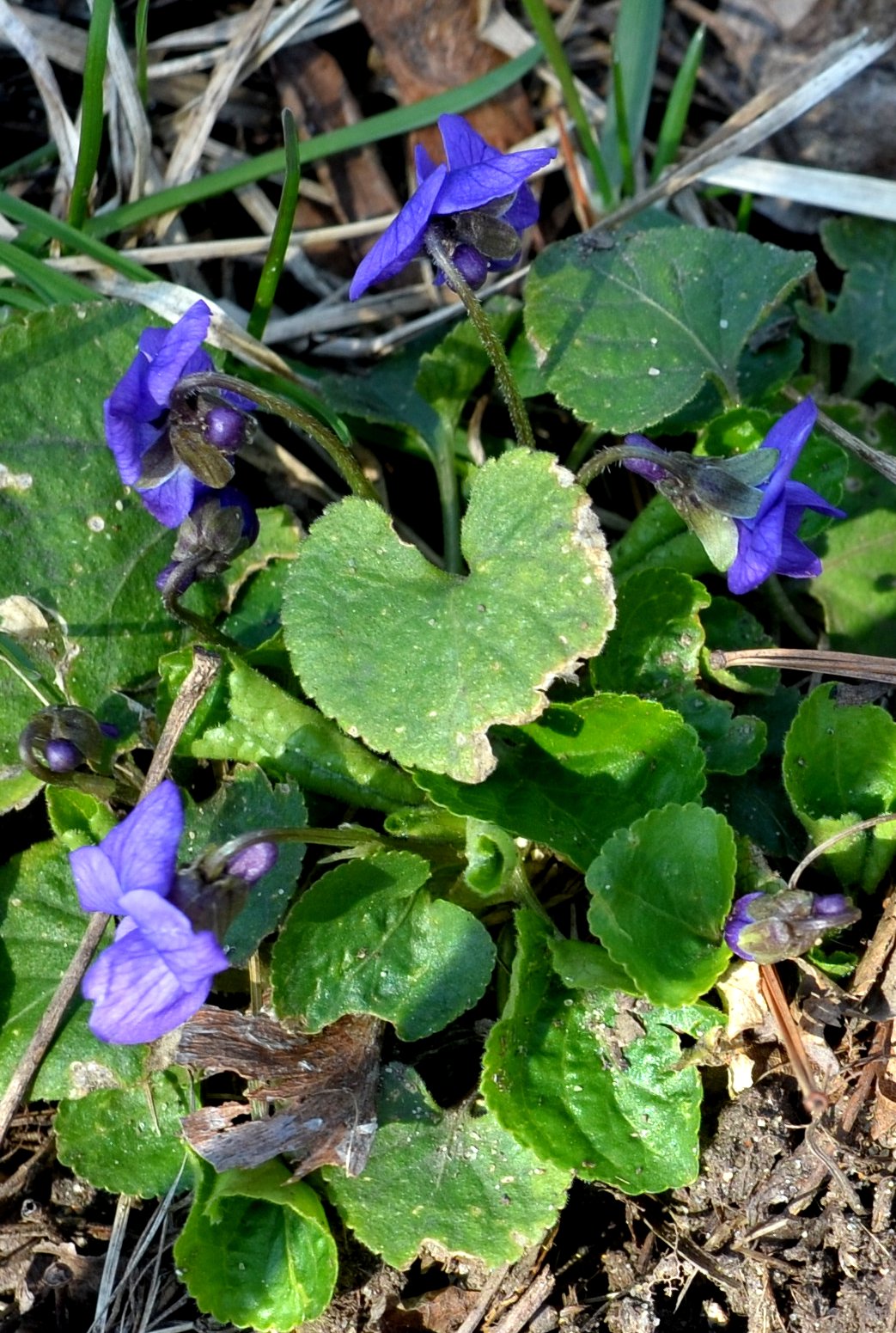
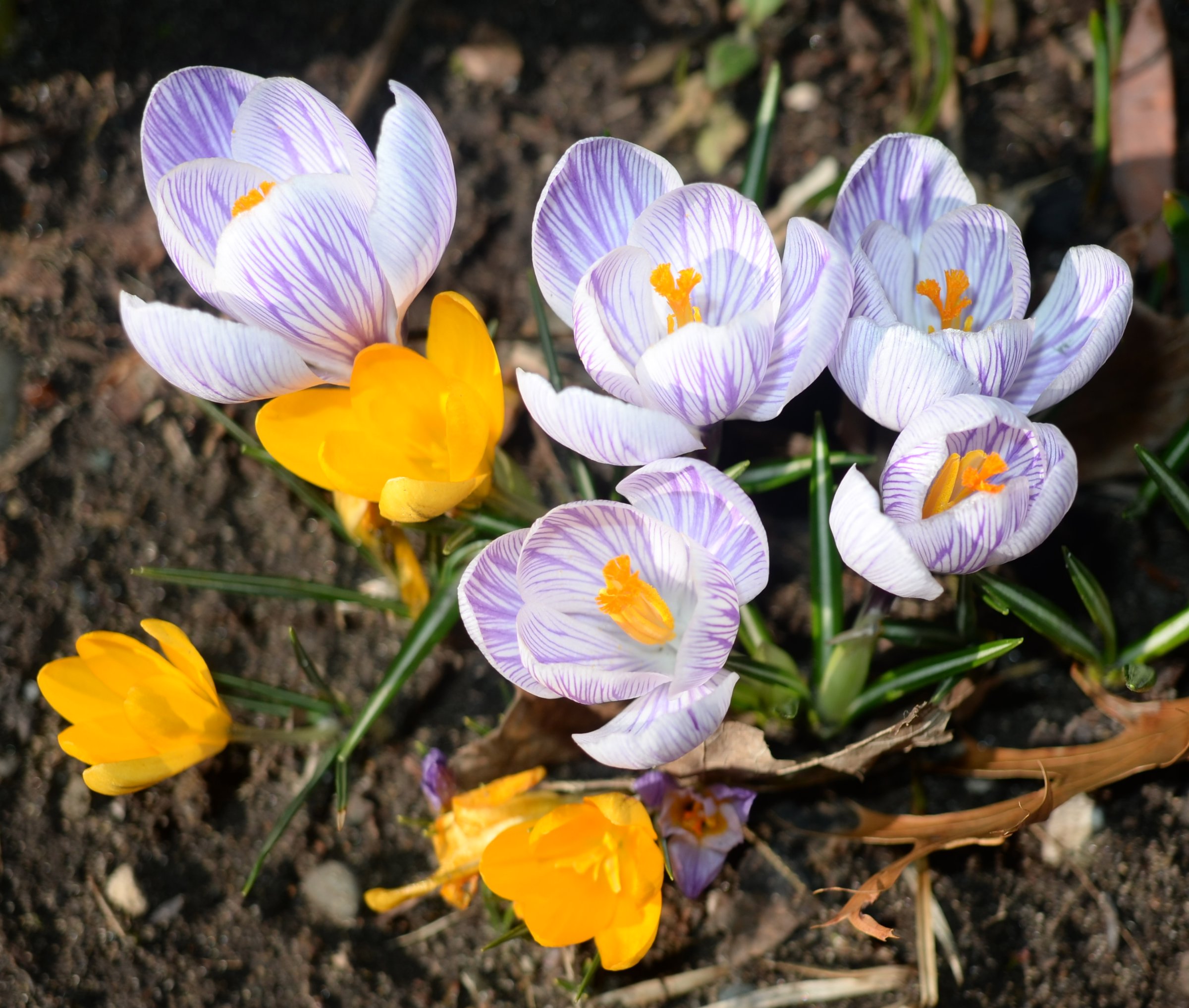
The dogwoods look as if they will bloom much better than last year. And last, a puzzle. What is this roundish ball in the maple tree? A tiny 2-cm wasp nest? Too small, I think.
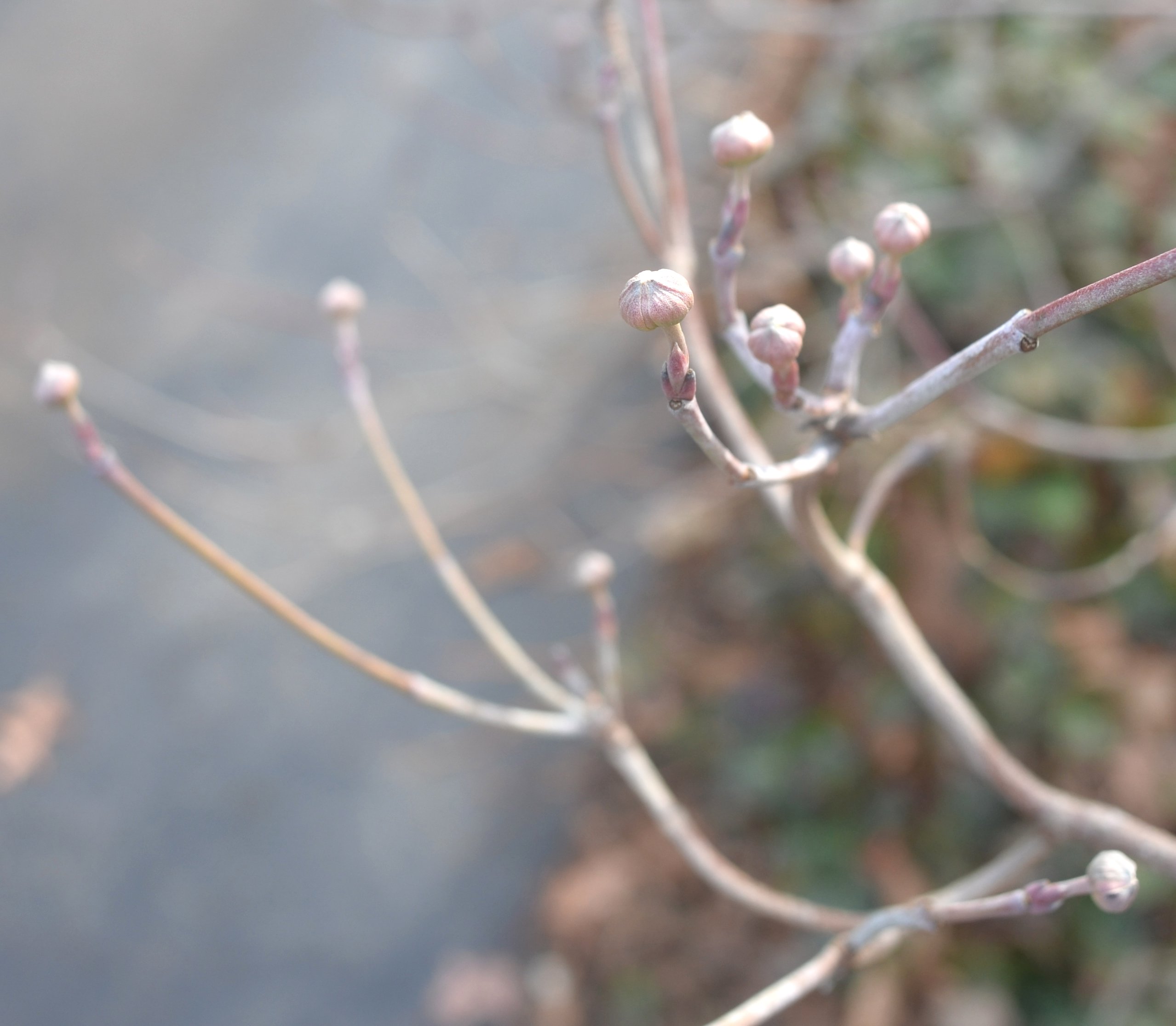
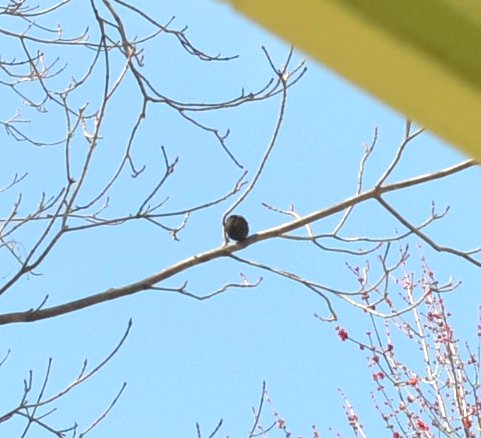
And that's the story for the past two weeks. Spring will not be deterred any longer. (Although I heard today that this coming weekend may bring spring snow!)
I hope the equinox will be a good start for all of us! I'll see you in another week or two, depending on what transpires! Good health to all!
Oh! I posted this picture on Researchgate as a puzzle. Can you do a better job of guessing what I intended it to be?
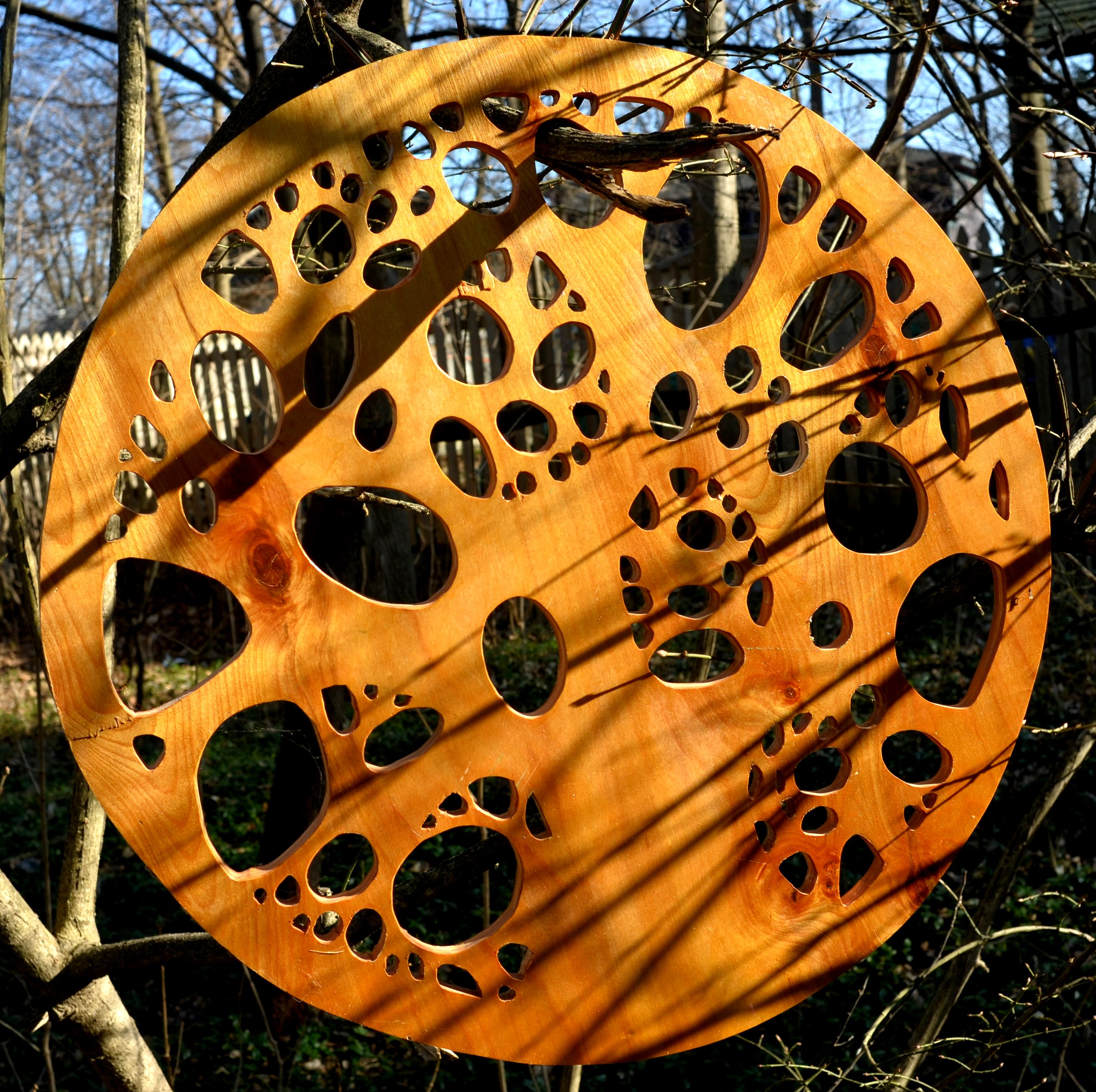
Back to March 13
On to April 1
Back to 2016 menu
Back to main menu
copyright Martha O'Kennon 2016


















 .
.


























